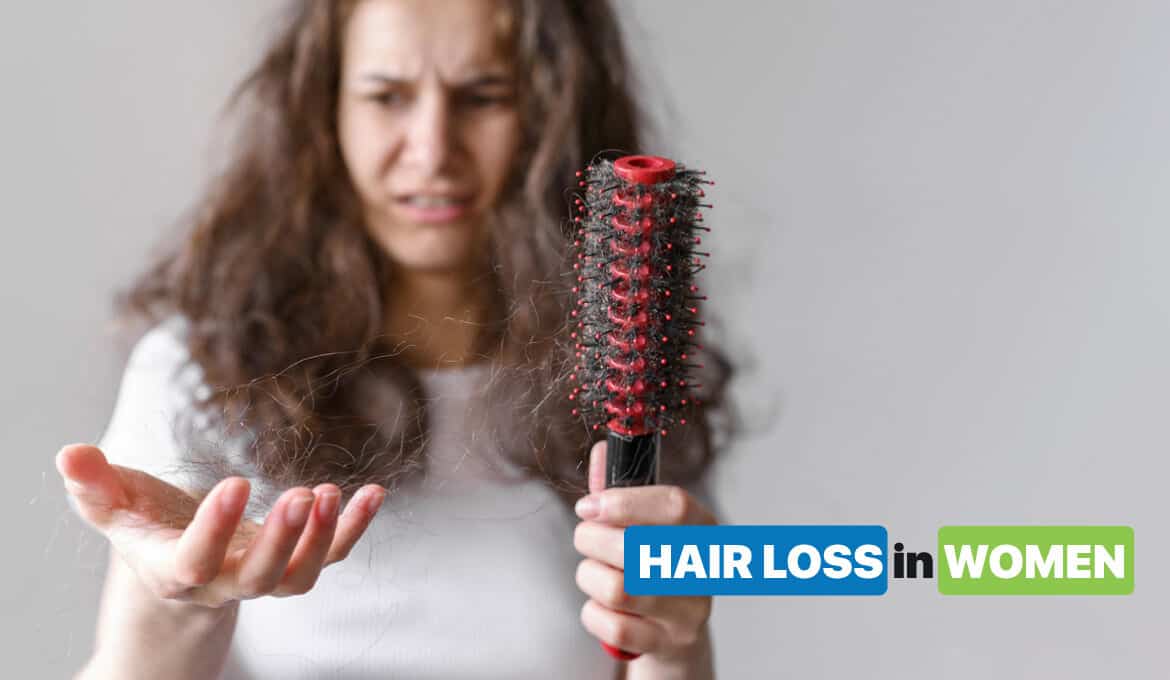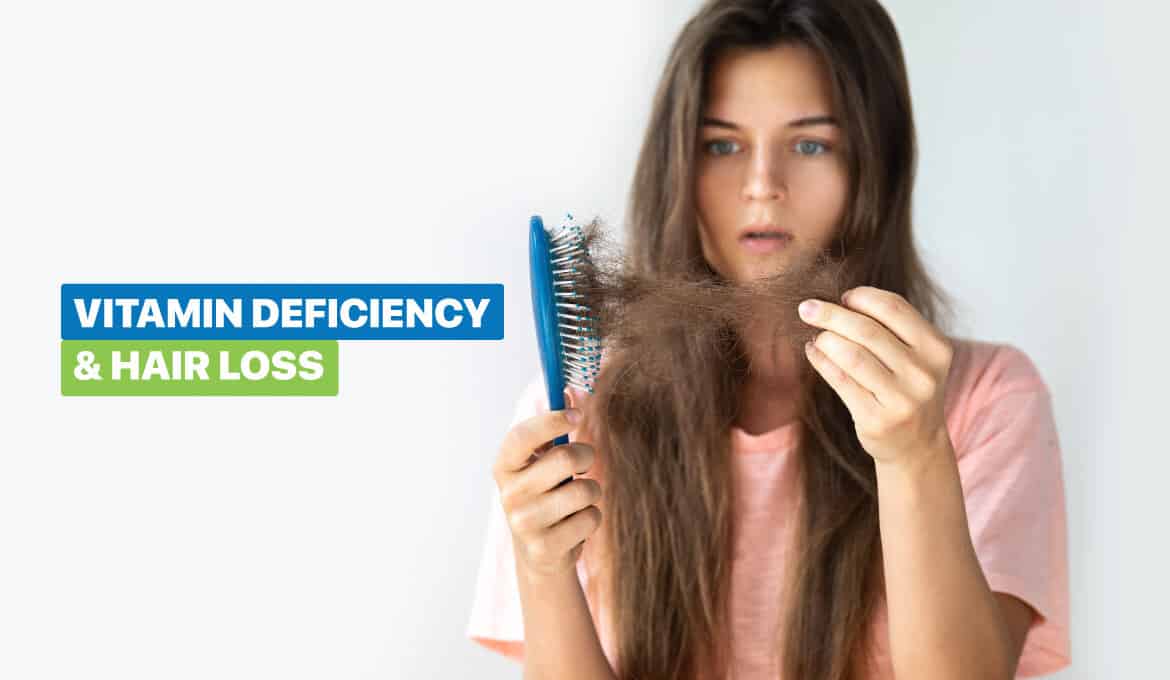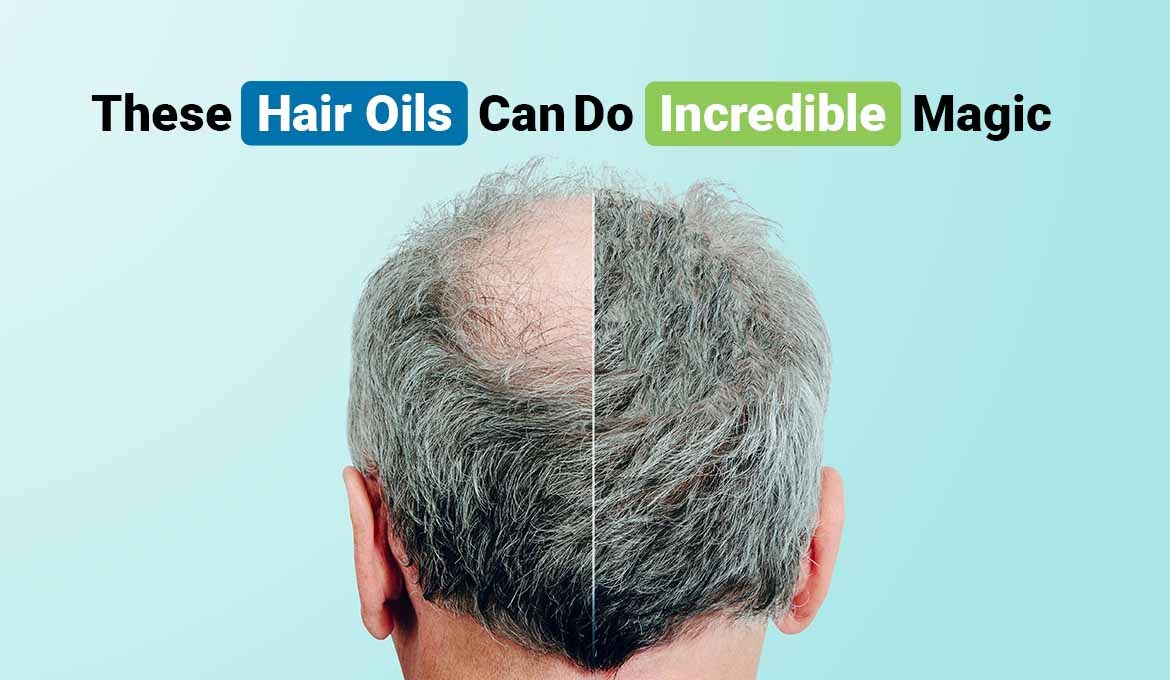
Are you experiencing too much hair loss? Have you wondered what could be causing this hair loss? Is it treatable? How can we prevent it?
You might be surprised to know that around 21 million women suffer from hair loss in the US alone. But what causes hair loss in women?
No doubt, hair loss, aka alopecia, is a common issue that affects people of all ages, genders, and races. Understanding the root causes of hair loss can help you prevent further hair loss.
Read this blog to know the fundamental causes behind hair loss in women and how it can be prevented.
What is Hair Loss in Women?
Hair loss in women is when a woman experiences sudden and excessive loss of hair.
While it's natural for humans to shed 50 to 100 strands of hair per day, it can be concerning when there's too much hair loss for many days.
Note that hair loss in women is different from hair shedding. Hair shedding is a part of natural balance. Few hairs fall out while others grow in. And when this balance gets disrupted, hair loss occurs. Hair loss is biologically called “alopecia.”
Is Hair Loss Common in Women?
Most people believe that hair loss exclusively affects men. However, it's not true. It is predicted that more than 50% of women worldwide may suffer from hair loss in their lifetime, with the figure rising to 80% in women above the age of 80.
Androgenic alopecia, sometimes referred to as female pattern hair loss (FPHL), is the most common cause of hair loss in women. We shall discuss the other causes later in this blog.
How Does Hair Grow?
Women experience hair loss for a variety of reasons; it could be hormonal, hereditary, or any other cause. However, we must first grasp the natural cycle of hair growth.
In general, human hair grows in cycles before falling out i.e., it goes through a natural cycle. That's why it is absolutely “Okay” for a woman to shed 50-100 strands of hair per day. So, if you feel like you're losing your hair day by day, there's nothing to worry about.
Hair growth typically occurs in three cycles, namely:
-
Anagen growth phase (2-7 years)
This is the first phase of hair growth, which occurs for two to seven years. During this growth phase, the cells at the root of your hair quickly divide, leading to the development and growth of the actual strand of hair. Interestingly, over 90% of the hair on your scalp is in the growth phase.
-
Catagen transition phase (2-3 weeks)
During the transition phase, major changes start occurring in the hair root. For the next 2-3 weeks, the hair follicle starts to shrink. Consequently, hair growth slows down and the hair detaches from the follicle base.
Usually, about half of the hair on your scalp is in the catagen phase.
-
Telogen resting phase (3 months)
This is the final stage of the hair cycle, where the actual hair fall happens. During this stage, the inactive hair strand begins to expel from the hair follicle and fall off the head whenever you brush your hair or shower.
It can, however, fall on its own too. Once the hair follicle is empty, it remains inactive for a few months before a fresh hair strand starts to grow, and the cycle repeats all over again.
When this cycle continues at its standard rate, only a small amount of hair is shed from day to day. Conversely, in the case of women with alopecia, the cycle is disrupted, resulting in extreme hair loss.
Signs and Symptoms of Hair Loss in Women
Some of the common signs of hair loss in women may include:
- Sudden falling of hair in a large quantity
- Gradual hair thinning, especially on the crowns of women's heads (usually due to aging)
- Complete loss of hair on the entire body, including the hands and legs
- Scalp skin visible through hair
If you notice two or three of these signs, it's time for you to consult a doctor or dermatologist.
What Are The Common Causes of Hair Loss in Women?
Some of the common hair loss include:
1. Androgenetic Alopecia –
Female pattern baldness is by far the most common cause of hair loss in women. It is scientifically known as androgenetic alopecia.
As the name suggests, this type of hair loss is due to genetics. Women tend to lose hair all over their heads. In most cases, female pattern baldness occurs as the result of aging but can start anytime after puberty. Many women may experience it after the menopause.
Androgenetic alopecia is usually untreatable; however, doctors say that minoxidil medication can treat this condition.
2. Hormonal changes –
Hormonal imbalance has proven to be the most common cause of hair loss in women after alopecia. This is due to the fact that our hormones greatly impact the health and function of every organ and system in our bodies.
3. Genetics and family history –
Genetic and hereditary factors play a crucial role in women's risk of developing alopecia. If you experience major hair thinning, it's a sign that your hair loss is due to genetics.
If your mother or any close relative had female pattern baldness, you are at higher risk of developing hair loss or baldness.
4. Tight ponytail
Yes, you read it right. Tight hairstyles like ponytails and braids can all lead to extreme hair loss. When you tie your hair tightly, your hair follicle gets damaged, which further regulates your hair growth.
So try not to tighten your hair too much, as it can permanently damage your hair follicles.
You May Also Like: How To Style Curtain Bangs in 5 Ways?
5. Medication side effects
Women dealing with chronic health conditions experience major side effects from taking prolonged medications. These side effects can cause long-term alopecia.
Depending on the health condition being treated, it is possible to minimize the risk of experiencing long-term effects.
6. Extreme stress
Women often begin to take stress, be it personal or emotional. It is reported that women with high levels of stress are 11 times more likely to experience hair loss. Why? It's obvious. When your body is under stress, the natural hair cycle gets interrupted.
After any depression or stressful event like divorce, breakup, or death of a loved one, hair loss can usually last for two to six weeks. So, try managing your stress and anxiety levels to stop further hair loss.
7. Chemotherapy
Women who undergo chemotherapy or radiation sessions for cancer treatment may experience significant hair loss, mainly in the growth phase. It is very common for them to experience alopecia.
Note that in this case, the hair loss can be temporary unless you damage the actual hair follicles.
8. Pregnancy
Some women experience extreme hair fall that occurs three months after childbirth. It is reported that postpartum hair loss is common and affects 5 out of 10 women.
This is because the estrogen level rises during pregnancy, which may temporarily change hair growth. And after childbirth, the estrogen drops down, leading to excessive shedding of hair. Further, your hair can regain its fullness six to nine months after childbirth.
Some doctors advise women to keep up with prenatal vitamins to reduce hair fall.
9. Trichotillomania (Hair pulling disorder)
Some people have a habit of plucking their hair out of stress. This common disorder is called Trichotillomania. Also called Trich, it is a method for some people to relieve their anxiety, frustration, and other negative emotions.
If you are pulling your hair non-stop, don't feel embarrassed to tell your doctor. Othersie, the condition can worsen if you keep doing it.
Also, if you are dealing with any serious mental health issue, don't keep it within you and consider seeking therapy.
10. Nutritional deficiency
Vitamins and minerals are crucial components of hair growth. Hence, not getting sufficient protein, B vitamins (biotin, Vitamin B12), or iron in your diet can severely damage your hair.
Hence, to prevent further hair thinning, take vitamin supplements or talk to your doctor for recommendations.
What Are The Effective Treatments for Hair Loss?
In the majority of cases, hair loss can be treated using various treatment options. However, note that the treatment option recommended by the doctor depends on the underlying cause and extent of your hair loss.
Following are some of the treatment options for hair loss:
a). Minoxidil
Minoxidil 2% and minoxidil 5% are the most popular over-the-counter drugs approved by the FDA. Also called Rogaine, it's a topical medication that comes in the form of foam or liquid and is used to treat female pattern hair loss.
Minoxidil is applied on the scalp every day to stimulate hair growth for both men and women. It may take around 6-12 months to see the noticeable results.
Note: Minoxidil is not advised for pregnant women or women who are planning to get pregnant. Consult your doctor before using this product.
b). Oral Medication
Another popular treatment is using oral medication such as Spironolactone. Spironolactone is the most effective and common oral medicine for treating hair loss in women. It is a diuretic and blocks the production of androgens, which can prevent further hair fall.
It is recommended to take Spironolactone pills for a period of 2-6 months for effective results. Pregnant women should abstain from taking this medication as it has the potential for child development.
c). Hair Transplant
Hair transplant is another option for hair loss treatment in women. It is performed under local anesthesia.
During a hair transplant, stronger hair from a healthy area is removed (usually the back of the head) and moved to a site on the scalp where hair is missing. The most common method is grafting, and many women consider it.
d). Microneedling
Microneedling of the scalp is a safe method for hair stimulation and is used in the treatment of hair loss in women. It can be done with or without the application of minoxidil.
How Can Hair Loss in Women Be Prevented?
Although hair loss caused by genetics and disease is untreatable, there are certain precautions you must consider in order to minimize your risk of hair fall. Follow these preventive tips:
- Avoid brushing or combing your hair when it's wet. Use a wide-toothed comb.
- Take vitamin supplements like Vitamin B12 and Biotin
- Minimize your intake of Vitamin A as it promotes hair loss
- Avoid smoking as much as you can
- Stay away from sun exposure and UV light
- Reduce your stress
- Eat a nutrient-rich diet (foods that include biotin, iron, and B-Vitamin)
- Avoid tying your hair tight with a rubber band.
- Use natural hair oil and shampoo (Paraben-free)
- Abstain from using heating products, which can damage your hair.
Final Reflections
As we can see, hair loss is indeed a very common thing in both men and women. But it can be distressing as it affects one's confidence. It's also very normal for women to usually lose up to 100 strands of hair each day.
There are many potential causes of hair loss in women, including female patterned baldness and hereditary and hormonal changes. If a woman notices more hair loss than usual, it can seem concerning, and it's advisable to consult a healthcare provider for available treatments.
FAQ
1. Why am I suddenly losing so much hair?
Ans: Sudden hair loss can occur as a result of hereditary medical conditions, aging, depression, hormonal changes, or nutrient deficiency.
2. What vitamin deficiency causes hair loss?
Ans: Certain vitamins have been associated with hair loss, which include Vitamin B12, Biotin, Riboflavin, and vitamin D and E. Deficiency of these vitamins causes hair loss in both children and adults.
3. What are the main causes of hair loss in women?
Ans: The most common cause of hair loss in women worldwide is female patterned baldness (androgenic alopecia). Other common causes include hormonal imbalances, PCOS/PCOD, increased stress levels, chronic medical conditions, and tight hairstyles, among others.
4. Does PCOS cause hair loss?
Ans: Yes, women with PCOS experience excessive hair loss and thinning due to high levels of androgens (male hormones). Usually, around 20% of women with PCOS have female pattern hair loss (FPHL), and its treatment can be tricky.
5. How can I stop hair loss naturally?
Ans: You can avoid hair loss naturally by washing them with lukewarm water, applying essential hair oils, taking supplements, reducing stress, and avoiding excessive heat styling. Also, stop applying chemical hair products as they completely damage your hair follicles.
6. Can female hair loss grow back?
Ans: No, it's not possible to regrow female hair; however, certain treatments can slow down hair fall. Some doctors recommend minoxidil liquid or foam for your scalp or tablets such as Spironolactone to reduce hair loss. Note that it may take 6-12 months to see results.
Read Also:






